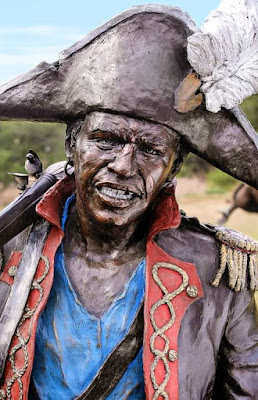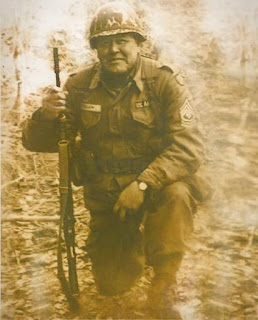Tortured bodies of five hanged men
It’s the 30th December 1808, 213 years ago on this day, and as people arise from their slumbers and go about their business along a few major roads in Cape Town they are stopped in their tracks at the macabre sight that greets them. Tortured bodies of five hanged men, tied upright and with chains slung around their shoulders and draped around their bodies is what met the gaze of the onlookers.
The five were publicly executed on 29 December 1808, after Lord Caledon decreed the action arising from the guilty verdict and sentencing of the men on 7 December 1808, for their roles in the Red October revolt by 326 enslaved that had taken place from 26 October to 28 October in that fateful year of 1808. A notice is above each body nailed to the post which props up the bodies.
The body of Louis of Mauritius was affixed to a stake and held in place by chains at the punishment poles near the citadel in Salt River, the place of execution reserved for slaves. The same was done with Irishman James Hooper’s body at the gibbet just across from the Castle next to the Grand Parade. In the case of Abraham of the Cape, his body was subjected to the same on the Koeberg Road leading to the farming district.
Jephta of Batavia’s body was hung in chains on the stake on the highway through the Zwartland farming district near to Vogelgezang farm and the same occurred in the case of Cupido of Java on the highway at Tygerberg. The bodies were ordered to remain there to rot and be consumed by the birds of the air. It was to serve as a deterrent to the enslaved as to what would be their fate should they consider rebellion.
The trial that ended on 7 December 1808 that preceeded these executions was the largest and grimmest Treason Trial ever to be held in South Africa.
The Trial of 326 was separated into a minor set of hearings and a major trial, with the prosecutor for the crown being his majesty’s fiscal, William Stephanus van Ryneveld Esquire. The charges were High Treason and Public Violence and Disorder. The procedure involved extraction of confessions by torture followed by a courtroom drama. The major trial involved 51 accused of which 16 would receive the death sentence, but 11 got reprieved and were given alternative sentences, while 5 were to be executed. Only one, namely another Irishman Michael Kelly, who had clearly turned key witness for the prosecution, was found not guilty and deported.
Those in the interrogations and minor fast-tracked hearings on their roles in the Jij Rebellion were finally given over to their owners for “correction” by Governor Lord Caledon. The others in the major trial numbering 46 were given various heavy sentences including imprisonment on Robben Island. Many of these slaves were from Mozambique – the Masbiekers who were the most down-trodden of slaves at the time. Of all of the 51 who were handed down the severest sentences 14 were Masbieker slaves and 17 locally born creole slaves. The rest were from Mauritius, Sri Lanka, Java (including Batavia), Bougies, Malabar, Bengal, and Madagascar; and one was an indigene Khoe farm labourer.
The rebels had raided over 40 farms and taken all of the European families as prisoners of war, tied up on wagons, without harming them, as they marched in two columns making their way from Malmesbury and the Tygerberg areas to attack military and government targets in Table Valley.
In the early hours of the morning of 28th October Louis and his column were on their way to link up with the column of Cupido and Adonis at Salt River. But Lord Caledon’s (Du Preez) Dragoons by 4 am had already captured most of the first column of rebel slaves. Louis column walked straight into a trap of the awaiting cavalry and infantrymen.
By midnight the first engagement with Abraham’s column had taken place and by 4 am most were detained. By about 2 am Louis column shared the same fate. Those rebels in retreating after the surprise engagement crossed paths with Louis column warning him that they were being pursued. . Louis of Mauritius and a few others on horseback made a quick getaway travelling in the direction of the South Peninsula.
As the Dragoon cavalry appeared from the dark many of the rebels froze and put up no further resistance while others ran in all directions before being rounded up. In a short while most of the 326 rebels were marched in defeat into two internment camps around Fort Knokke and Fort Maastricht. The leaders were removed and incarcerated at the Castle.
Louis made his way to Diep River where he sought refuge with friends of his dear wife Anna, – a couple by the names of Frederik and Betje Arendse. They however, fearful of the consequences of aiding and abetting the fugitive, betrayed Louis by sending a secret message to the local Field Cornet, Colyn. Louis was a step ahead however when he overheard the distraught old couple talking to someone and sending him on his way.
Louis quickly made his escape to Wynberg. But it was here that he was eventually tracked down and cornered by a detachment of collaborator Khoe Militia under European command at a Tavern. Louis was pounced upon, pinned down and bound. He was then taken to Cape Town under guard where he was kept separate from the other leaders at the Castle for interrogation.
The rebels who sought to overthrow the British government at the Cape and replace them with a freed slave government were to face swift justice. In how the court proceeded there was a fine line between interrogation and torture on the one hand and judicial procedure on the other. Through a process of interrogation over the next week Lord Caledon had separated three categories of rebels. The Treason Trial was hastily convened and broken up into minor fast-tracked pre-trials and a major trial and the rebels were categorized. The first category was the 6 considered ringleaders, the second 45 diehard rebels suspected of being the backbone of the rebellion, and then final category was the rest dealt with as the minor infringers. In the case of the latter these were subject to a fast-tracked part of the trial, sentenced and given over to their owners with a verdict of punishment as the owners saw fit.
A minutely detailed record of the Court of Justice exists where the main charge was High Treason, Public Violence and Disorder. This gave some credibility to a trial keenly followed by abolitionists who were highly influential at the time, having secured an end to the slave trade declared in the Parliament in London in the previous year. An array of charges ensured that everyone charged would be assured of conviction.
The pre-verdict and releasing of the majority into the custody of their masters for punishment killed two birds with one stone. It appeased the proponents of rough justice outside of the public gaze and it also gave an impression of clemency and a new liberal order while giving some credibility the Lord Caledon’s earlier letter dispatched to London that downplayed the revolt as a foolish little hiccup in an otherwise peaceful and orderly colony.
In Court Louis stood by his beliefs in explaining himself and argued in mitigation that he kept discipline in the course of the revolt. He established that he was sincere in his opposition to slavery and believed that he conducted himself well even although the courts labelled the act of rebellion an evil, foolhardy and irresponsible deed. In his trial Louis testified – “I had heard that in other countries all persons were free, and there were so many black people here who could also be free and that we ought to fight for our freedom and then – enough!” Louis made it clear that his was a political stand by military means in the cause for freedom.
The Court heard too that Abraham had made the statement which defined the revolt. He it was reported had made a statement to a gathering of some of the rebels on the eve on the final offensive saying, “tomorrow when the bloody red flag of battle goes up and the fight for freedom is complete, you will be able to address your owners as ‘Sij’ and ‘Jij’ (she and you).” The court saw this instigation to use the familiarity, equality, and insolence term "Jij" as a heinous act of arrogance, insolence, and incitement. Right to this day the term “Djy” spat out at an opponent without further words attached is enough to stop one in their tracks.
The Court rejected both Louis account of his exemplary conduct and motivations and indeed the evidence showing no fatalities and a relatively disciplined revolt. It was put across that this was a major disorderly act of rebellion and high treason rather than the simple disturbance of the tranquility at the Cape that Lord Caledon had communicated to his friend, a fellow Viscount in the British Nobility early in November that year.
As a result of this Treason Trial, sixteen of the rebels were condemned to death by the Court, but the Governor, Lord Caledon (du Preez), intervened to commute 10 of the death sentences to lengthy imprisonments and hard labour and only 5 were given the death sentences carried out on 29th December 1808, followed by the macabre display of their chained dead bodies in public as deterrents.
Today, 30 December 2021 we remember how the remains of our forebears Louis van Mauritius, James Hooper, Abraham van der Kaap, Jephta van Batavia and Cupido of Java were treated after they were tortured, tried, and hanged for their leadership of an act of rebellion the Jij Rebellion. This major event in the history of Camissa Africans and their resistance to colonialism, has been consistently ignored by the post 1994 government which like the white National Party before them seems to purge anything in history that contradicts the skewed official approach to South African history and heritage.
(With reference to the historical record by George McCall Theal; Records of the Cape Colony... 36 Vols... Volume 6; William Clowes and Sons ltd; London; 1900)














Comments
Post a Comment